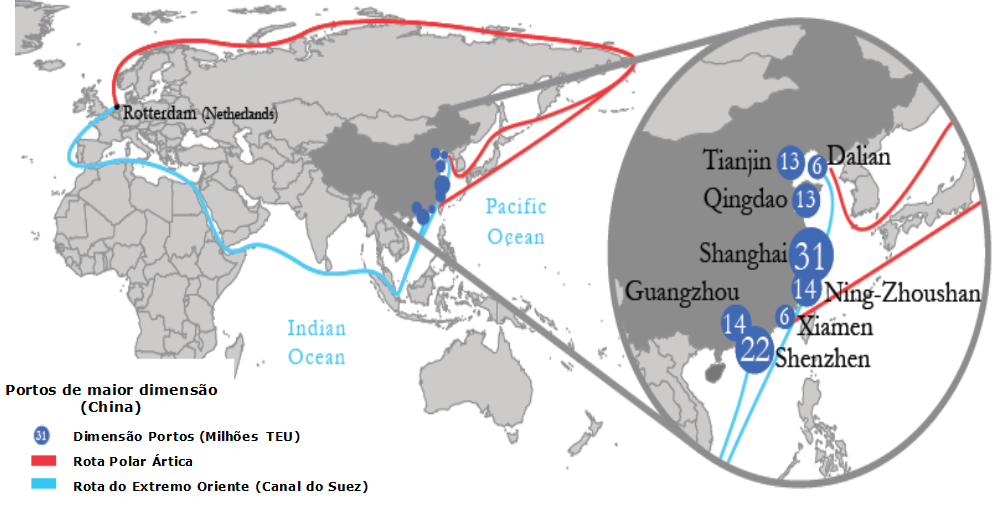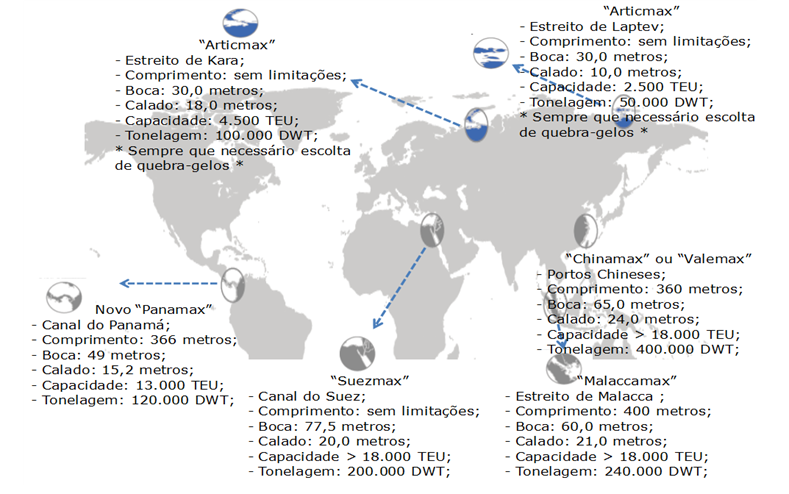David Melgueiro - Legend or Reality?
There are no historical evidences to prove it, but several historians mention that the Portuguese navigator David Melgueiro was the first, in 1660, to establish the maritime connection by the North between the East (Japan) and Europe (Porto), through the so-called Arctic Polar Route.
Regardless of the truth of this reality, it remains paradoxical that in 2024, Vladimir Putin, President of Russia, hypocritically draws attention to the virtues of this maritime connection in a context of great instability in the Middle East, which has led most of the World Maritime Operators to opt for the Cape Route over the Suez Canal, due to the successive terrorist attacks on merchant ships by the Houthis from Yemen. The Houthi rebels are supported and armed by Iran, and it would be much easier for Putin to use his political/military influence to end their intervention.
Arctic Polar Route vs. Suez Canal

In reality, the reduction distance between major production centers (China) and cargo attraction areas (Northern Europe) is significant, which combined with the effects of climate change (warming of the world's average temperature, resulting in the melting of polar ice caps), allows for consideration of the navigability and viability of this route in a competitive manner, in commercial terms. The reduction in distance could potentially lead to a significant decrease in travel time between major ports in Europe and major Asian ports.
Operational and Safety Issues in Navigation
Analyzing statistical data regarding the average speed of ships with a gross tonnage over 50,000 DWT on the Arctic Route, we find that their average speed is significantly lower than the average speed of ships following the Suez Route or the Cape Route. A traditional container ship travels at 16 knots on the Far East Route (via Suez Canal/via Cape of Good Hope). On the Arctic Route, the average speed does not exceed 12 knots. The reduction in geographical distance does not significantly translate into a more competitive transit time.
Shanghai - Rotterdam - Suez Canal vs. Cape Route vs. Arctic Route
1) Distance (Suez Canal) 10,800 nautical miles / Travel Time 28 days (16 knots)
2) Distance (Cape Route) 13,500 nautical miles / Travel Time 35 days (16 knots)
3)Distance (Arctic Route) 7,700 nautical miles / Travael Time 26.5 days (12 knots)
Another aspect to consider is navigation safety. The number of accidents on the Arctic route is very significant. One-third of these accidents are related to main engine failures, a significantly higher value than on other navigation routes and closely associated with low temperatures and adverse sea conditions.
Commercial Issues (Economies of Scale)
The determining issue that questions the viability of the Arctic Polar Route as an alternative to the Far East Routes (via Suez or via Cape) is the size of the ships and associated economies of scale.
"Arcticmax" type ships (maximum size for navigating the Arctic Route) have no chance of competing with the economies of scale associated with the latest generation container ships that sail the world's major maritime routes and, in particular, the Far East Maritime Routes. "Arcticmax" ships are limited in terms of beam and draught, carrying a maximum of 2,500 to 4,500 TEU. The mandatory escort of icebreaker ships limits the maximum beam of these ships to 30 meters (corresponding to the beam of the icebreaker ship).
There are also some natural limitations, such as the Bering Strait and the Laptev Strait, which limit the draught of ships to a maximum value between 10 and 12 meters.
Natural Geographic Limitations vs. Types of Ships

Conclusions - Viability of the Arctic Polar Route
Even in a scenario of great political and social instability in the Middle East, the Arctic Polar Route will not be a credible alternative to the Far East Routes (either via Suez or via Cape) in the maritime connection between Asia and Europe in the near future. The limitations in terms of beam, draught, and navigation safety determine this. Only ships up to 4,500 TEU will be able to use it.
In addition to this fact, there is the absence of a port network to support the establishment of a distribution network. The advantage in terms of physical distance is also limited by the low average sailing speed.
Regardless of Vladimir Putin's intentions, in our opinion, it will not be now that the Arctic Polar Route will assume a significant role in world maritime traffic.





0 Comentários